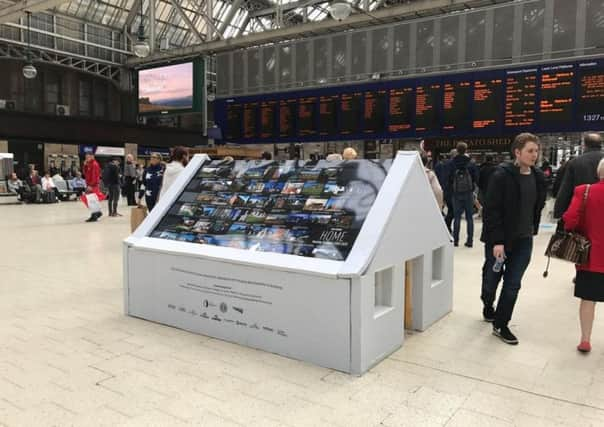Architects anger at 'embarrassing' pop-up house at Glasgow Central


The Royal Incorporation of Architects in Scotland (RIAS) installed the small house-shaped structure in the main concourse of Glasgow Central Station with the aim of showcasing the work of leading firms as part of the Festival of Architecture.
But the flimsy-looking result, which was originally clad in grey foam in case children bumped into it, has provoked a number of complaints from furious architects who described it as “offensive to the profession”.
Advertisement
Hide AdAdvertisement
Hide AdThe project was intended to engage the public and showcase the best houses and larger developments built in Scotland since 2000, with the tiles of the structure’s roof made up of images submitted by the winning firms.
But Helen Lucas, of Edinburgh-based Helen Lucas Architects, described the installation as a “horror”, telling the Architects’ Journal it was a “completely embarrassing representation of our profession, demonstrating no design, execution or construction skill”.
Jude Barber, of Glasgow-based Collective Architecture, added: “I was deeply embarrassed that such a poorly conceived and executed structure was being showcased in such a public way. I was furious when I realised that our studio’s work was contained within it.”
In the wake of the criticism, RIAS agreed to remove the foam cladding to improve the look of the structure.
The organisation’s secretary, Neil Baxter, said many of those who disliked the installation had seen it while it was only partially built.
“The intention was not that it should be perceived as a house,” he added.
“It is a lightbox with an angled roof. Putting the end elevations on with windows and a door and adding the wee chimney was intended to be just a bit of fun. Also it engages with the public, our intended audience.
“The public reaction has been very positive. They seem to be appreciating the humour of it.”
Acknowledging the criticism it had received, he said he would be writing to all the firms whose work appears on the house to ask if they would like to be removed.